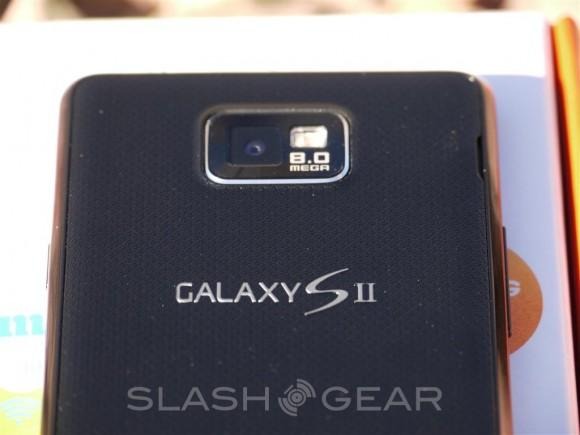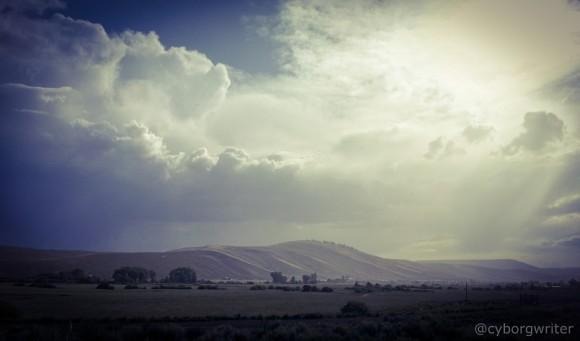5500 miles with a smartphone
Smartphones are everywhere. We not only hear this (often with a negative connotation) in our everyday lives, but we witness it, too. It doesn't matter where you go: to dinner, to the theater, to the bus stop, to the checkout line. It seems every hand holds a smartphone, and every eye is perpetually fixated upon them.How deeply do smartphones influence and otherwise supplement our lives? Such is not a new question, but one I found myself asking with increasing frequency this summer during a near 40 day road trip from one end of the United States to the other. I spent 5500 miles with my smartphone, and for one drought-ridden summer in an old van it became my best friend, my personal navigator, my faithful mentor, my distraction, my solution, my lifeline – maybe even my crutch at times.
At the end of the trip I rolled back home having learned many things, and quite a bit of them revolved around the trusty and somewhat elderly Samsung Galaxy S II that has spent so many months in my pocket, in my hand, in my life. By proxy, I learned just how much technology not only influences, but improves, our lives.
The Gear
The modern road trip is minimalistic. It is sleek. It comes with a 12v cell phone charger and a backup battery. I tossed a protective case, dash mount, and audio cable into the mix. Such was the extent of my road warrior paraphernalia. It all fit into a small hard-shell case, and it promised to do everything I'd need when I'd need it to. In a brief moment of doubt, I added my Canon digital camera and Sony camcorder into the mix – I hadn't used either in longer than I could remember, yet I doubted my smartphone could replace them.

Before leaving, I tried to estimate all the ways my smartphone might be put to use. Navigation is an obvious one, but the uses of a handset extend beyond that. I ended up filling the storage with music and ebooks, downloaded a couple games that looked mindless enough to be hopelessly addictive, and updated the apps. I wondered if I'd use it as often as I anticipated. I wondered if it would meet my expectations.
The phone was plugged into the 12v charger, snapped into the dash case, and connected to the stereo. The entire time required to assemble one's own personal navigation and information assistant, to prep entertainment, to integrate the system into one's vehicle? About 20 minutes.
Where Smartphones Shine
The smartphone was irreplaceable after the first 30 minutes. I'd traveled to areas unknown, and it didn't matter. When I needed to turn, my music faded away to a disembodied voice telling me when to turn, when to merge. I didn't question the voice – it never led me astray. It spoke when needed and faded away when it wasn't, returning my Internet-provided and completely tailored radio station that wasn't bound by the confines of terrestrial buildings and reception.
When it came time to eat, all I had to do was talk at the phone, and it pulled up a list of places nearby that I might want to go. Each location was accompanied by easy-to-browse star-based rating systems with user reviews on the side. I knew to avoid Peggy's 50s-themed roadside diner before its billboard ever appeared on the side of the highway. Peggy never had a chance against the hivemind of Google.
Another area where the smartphone excelled was photography. I'll let one of its images speak for itself:

The image was taken on the side of the highway. It was edited later on in an app. At no point over the course of 5500 miles did I find cause to pull out my digital camera for an image, nor to use my camcorder. In most situations, the camera on the smartphone was more than enough, often recording with higher quality than a digital camera from a mere two years ago would be capable of. I could edit from the same device and fire the content off to an Internet-wide audience. All with a few taps.
It was around the 2000 mile mark when I had a realization: the smartphone was everything. It was the constellation finder in the middle of a Utah night. It was a car repair manual on the side of the highway. It was a banker micro-managing my funds. It was my Spanish translator. It was my Internet connection in WiFi-barren lands. It was my connection to distant friends. It was my ebook reader late at night. It was my lazy distraction.
The more I wondered what the trip would be like without the smartphone, the more I realized how much would be lost. A smartphone didn't just make these activities more convenient – it both simplified and optimized them.
Where Smartphones Fail
Smartphones are valuable beyond their price tags, yet there are still downsides to them, and one becomes painfully aware of those issues when the device moves beyond mere companion and transforms into an essential life tool.
In the technical sense, smartphones have three issues: reception, battery life, and screen size. The value of one's handset drops at about the same rate as bars drop in a low-coverage area. Low battery life neutralizes even the most powerful handset, and a small screen slows down even the most efficient multi-tasking. All these things will be solved in time, however, as technology grows.
The other issue is the flip-side of everything a smartphone offers, and it isn't something innovation can necessarily address: the total autonomy that comes with all your questions and needs being fulfilled in one easy-to-transport glowing screen. Before smartphones and everything they offer, interacting with fellow humankind was a necessity – directions were to be had at gas stations, lonely diners became random meal fellows, and we spent our down time hearing about others' activities in person, not on Facebook.
A smartphone is simply a tool, so it can't be blamed. People use that tool, and its efficiency eliminates many unnecessary – yet mostly enjoyable and memorable – encounters. Such is the nature of things. Though at times I marveled at how much a smartphone had to offer me, I also wondered what the trip would have been like without it from a different standpoint. More inefficient, yes. Inconvenient at times, yes. But perhaps it would have been more raw, more visceral, more interactive and uncertain.
The smartphone was a safety net, an insurance policy. When everything is at your fingertips and goes according to plan, a different thought begins to surface: maybe humans aren't meant to have things run so smoothly. Maybe we need to get lost sometimes. Maybe we need to wonder what constellation those stars belong to and listen to the unsolicited stories of strangers and eat over-priced 50s-themed diner food.
Conclusion
If I had to summarize what spending 5500 miles relying on a smartphone taught me, it would be this: that technology is not separate from life, and life is not separate from technology. The difference is that smartphones are meant to complement life, but life isn't meant to complement smartphones. It is only when our perspective of this becomes skewed that problems arise. Use it wisely, and a smartphone will be one of the most powerful tools you own.
